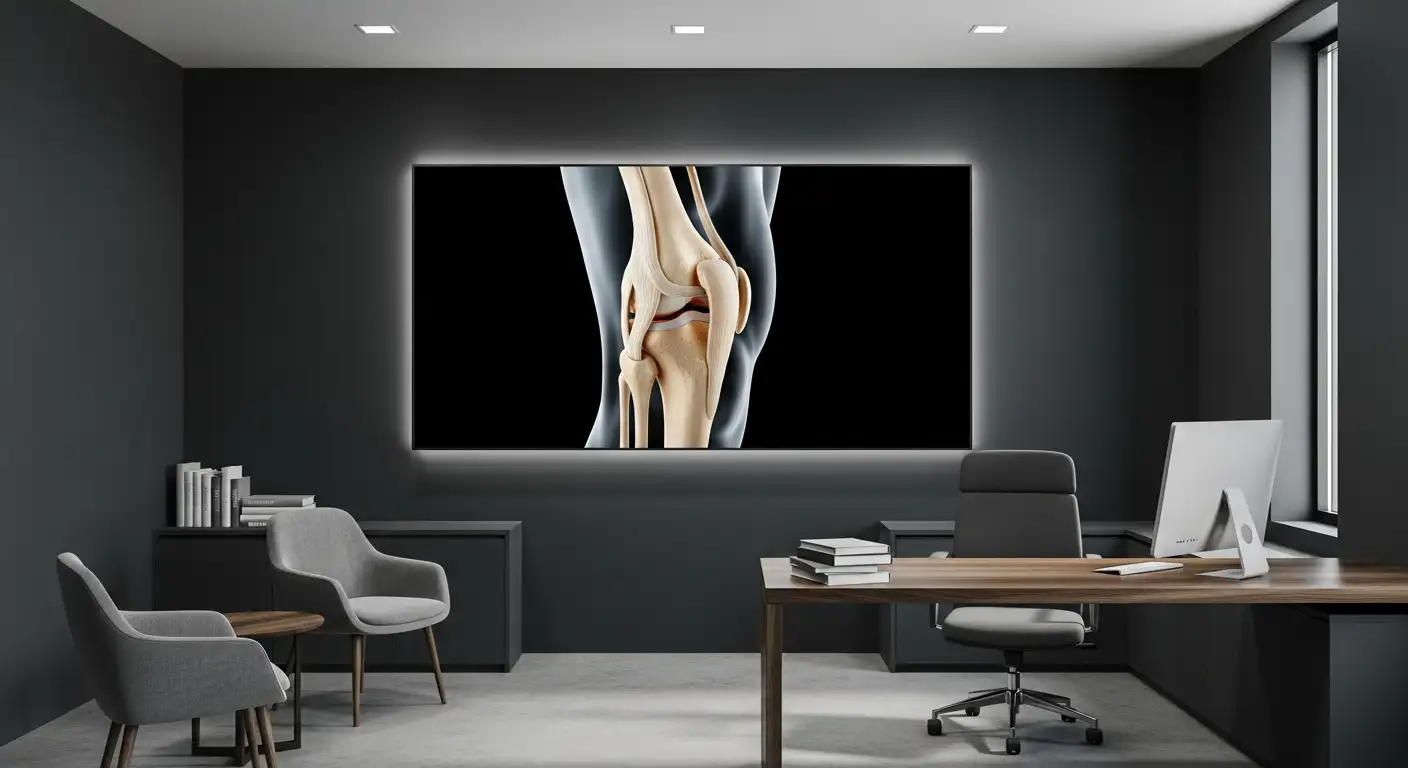Understanding Knee Pain
Knee pain is a widespread issue that can arise from a variety of causes. It's essential to understand these causes to effectively manage knee pain and improve the overall quality of life. Moreover, there are several strategies to tackle knee pain, one of which is knee taping. This method can be beneficial for various conditions, as outlined below.

Causes of Knee Pain
Knee pain can stem from several conditions or injuries affecting the complex structure of the knee. These may include ligament sprains or tears, meniscus tears, tendinitis, and various forms of arthritis, among others. Knee pain can also be caused by overuse, strain, or other injuries from physical activities such as running or playing sports.
Conditions Benefiting from Knee Taping
Knee taping is a technique often used by physiotherapists to manage knee pain and provide support to the knee joint. It can help offload structures, improve proprioception, and reduce pain.
Specifically, knee taping can be used to provide support and stability to the knee joint, which may help alleviate pain and prevent injuries during physical activities.
This technique can also help individuals with conditions such as patellofemoral pain syndrome, iliotibial band syndrome, and patellar tendinopathy. By providing additional support and reducing pain during physical activities that stress the knee joint, knee taping for knee pain can greatly enhance the quality of life for individuals suffering from these conditions.
In summary, knee taping is a practical strategy for managing various types of knee pain. By understanding the underlying causes of knee pain and the potential benefits of knee taping, individuals can make informed decisions about their pain management strategy.
Basics of Knee Taping
Before embarking on the journey to knee pain relief through taping, it's important to understand the fundamental principles of this technique.
Purpose of Knee Taping
Knee taping serves two primary purposes: pain reduction and increased stability. This technique can provide support and stability to the knee, especially during physical activities, and may help reduce pain. It can also aid in the recovery process post-injury. Knee taping is often used to help athletes reduce pain during exercise while their injury heals.
There are different taping techniques such as the 'Kinesiology Taping Method' and 'McConnell Taping Technique' that can be used to support the knee and potentially alleviate knee pain [2].
Precautions Before Taping
Before applying tape to the knee, there are a few key precautions that one should take. Firstly, the area should be clean and dry, as moisture can reduce the tape's adhesive properties and its effectiveness. Secondly, using too much tension while taping the knee can result in restricted blood flow or skin irritation, so it's essential to apply the tape with the right amount of pressure to prevent adverse effects.
To ensure correct application and optimal results, it's highly recommended to seek guidance and training from a healthcare provider or physical therapist when using knee taping techniques. This will also help minimize the risk of skin irritation or other adverse effects.
In summary, while knee taping can be an effective method for managing knee pain, it's crucial to do it correctly and with the necessary precautions. As with any health-related practice, it's always best to consult with a professional before attempting new techniques.
Knee Taping Techniques
There are several techniques used in knee taping for knee pain relief. Selection of the technique usually depends on the individual's specific needs and goals. In this part, we will delve into three widely used techniques: Kinesiology Taping Method, McConnell Taping Technique, and Mulligan Taping Technique.
Kinesiology Taping Method
The Kinesiology Taping (KT) method is a novel, nonoperative therapy used for treating chronic knee pain, particularly beneficial in the early stages of treatment. According to a meta-analysis cited by the National Institutes of Health (NIH), KT is more effective than placebo taping or non-elastic taping in the first four weeks. However, no significant difference in pain reduction was observed when KT was used for more than six weeks.
KT can be particularly beneficial when combined with an exercise program, yielding positive effects measured by the visual analogue scale (VAS). However, it's crucial to note that while KT can provide temporary pain relief for chronic knee pain, its efficacy in reducing long-term pain from degenerative diseases remains uncertain.
McConnell Taping Technique
The McConnell Taping Technique is another method often used by physiotherapists to manage knee pain and provide support to the knee joint. This technique aims to alter the mechanics of the knee joint, redistribute the load across the knee, and ultimately reduce pain [1].
McConnell Taping is particularly useful for reducing knee pain associated with patellofemoral pain syndrome. It can also improve proprioception which aids in the stability of the knee joint, making it a valuable technique for those looking to enhance their sporting performance.
Mulligan Taping Technique
The Mulligan Taping Technique is another popular method used to tape the knee. Like the other techniques mentioned, it aims to provide support to the knee joint and reduce pain. The specifics of this technique can be customized based on the individual's needs and goals to achieve optimal results in managing knee pain [1].
There's a need for more high-quality research to understand better the effectiveness of these knee taping techniques for different knee conditions and their specific mechanisms in providing pain relief and support. Regardless of the technique used, knee taping is a valuable tool in managing knee pain, but it should always be used in conjunction with a comprehensive treatment plan that includes exercise and, where necessary, professional medical intervention.
The Process of Knee Taping
The effectiveness of knee taping for knee pain relief largely depends on the process followed. This includes the preparation of the knee before taping and the proper application of the tape.
Preparing the Knee for Taping
Before applying the tape, it's essential to clean and dry the knee area thoroughly. This step is crucial in maximizing the tape's adhesive properties and ensuring its effectiveness. Moisture can reduce the tape's grip, thereby compromising the stability and support it offers.
Applying the Tape
Once the knee is prepared, the next step is to apply the tape. The tape should be applied with the right amount of tension to provide support without restricting blood flow or causing skin irritation. Applying too much tension while taping the knee can lead to adverse effects like reduced blood circulation or skin irritation [1].
It's also important to follow specific taping techniques such as the Kinesiology Taping Method or the McConnell Taping Technique for effective relief. These techniques are designed to provide optimal support and stability to the knee joint. When applying the tape, it should be unrolled slowly from the skin to avoid irritation [1].
Guidance from a healthcare provider or physical therapist is recommended to learn the proper taping techniques and ensure correct application for optimal results. A consultation with a licensed sports medicine specialist can help customize the taping method to cater to individual needs.
The process of knee taping, when followed correctly, can significantly contribute to managing and relieving knee pain. Always remember that learning the proper techniques and seeking professional guidance is key to ensuring the effectiveness of knee taping for knee pain relief.
Knee Taping and Pain Management
Knee taping is a common method used for managing knee pain. It provides support, stability, and can aid in recovery post-injury. There are short-term and long-term effects of knee taping that contribute to pain management and overall knee health.
Short-Term Effects of Knee Taping
In the short term, knee taping can provide immediate relief from pain and discomfort. It offers additional support to the knee during physical activities, reducing the stress on the knee joint. This is especially beneficial for individuals with conditions such as patellofemoral pain syndrome, iliotibial band syndrome, and patellar tendinopathy [2].
Kinesiology taping is one of the techniques used in knee taping. It improves blood flow and reduces the perception of pain, thus providing immediate relief. In conditions like patellofemoral pain syndrome, this technique may change how the kneecap tracks over the femur, reducing pain and improving function.
However, it's crucial to apply the tape with the right amount of tension. Over-tightening can restrict blood flow and cause skin irritation.
Long-Term Effects of Knee Taping
When used consistently and correctly, knee taping can have long-term benefits, including improved knee function and reduced pain during physical activities that stress the knee joint. According to a study in the "British Journal of Sports Medicine," knee taping, in combination with exercise therapy, was found to be more effective in reducing knee pain and improving function than exercise therapy alone [2].
Over time, knee taping can facilitate natural movements, enhancing performance during sports activities. It can also help manage knee pain in various conditions by providing consistent support, thereby improving the quality of life of individuals experiencing knee pain.
However, proper guidance and training from a healthcare provider or physical therapist are recommended when using knee taping techniques to ensure correct application and optimal results [2].
While the benefits of knee taping for knee pain management are evident, more research is needed to understand its effectiveness fully. Nonetheless, it remains a valuable tool in providing short-term relief and long-term management of knee pain.
Role of Knee Taping in Exercise
Knee taping plays a significant role in exercise, particularly for individuals who experience knee pain. Its benefits extend from providing support during physical activities to facilitating natural movements and enhancing performance.
Benefits of Taping During Exercise
Knee taping can provide support and stability to the knee joint, which may help alleviate pain and prevent injuries during physical activities such as running or playing sports [2]. This can be particularly beneficial for individuals with conditions such as patellofemoral pain syndrome, iliotibial band syndrome, and patellar tendinopathy that stress the knee joint.
In addition to providing support, knee taping using kinesiology tape also improves blood flow and reduces pain perception. This not only helps manage knee pain in a variety of conditions but also facilitates natural movements and enhances performance during sports activities.
Combining Taping with Exercise Programs
Combining knee taping with an exercise program can provide more effective results in reducing knee pain and improving function. A study published in the "British Journal of Sports Medicine" found that knee taping in combination with exercise therapy was more effective than exercise therapy alone.
Kinesio Taping (KT) has been used as a novel nonoperative therapy for treating chronic knee pain. Studies show that KT is more effective than placebo taping or nonelastic taping in the early four weeks. However, no significant difference in pain reduction was observed when KT was used for more than six weeks. However, a positive effect was observed for KT combined with an exercise program training when measured by the visual analogue scale (VAS).
In conclusion, knee taping for knee pain can provide support, stability, and pain relief during exercise, making it a beneficial practice for those experiencing knee pain. However, it's crucial to consult with a healthcare professional or a trained physiotherapist to ensure the taping technique is correctly applied and it's suitable for your specific condition.
Consultation and Professional Guidance
Navigating the realm of knee taping for knee pain relief can be challenging without the right guidance. That's where professional consultation and tailored techniques come into play.
Importance of Professional Consultation
Proper guidance and training from a healthcare provider or physical therapist are recommended when using knee taping techniques to ensure correct application and optimal results. Not only does professional consultation ensure the correct application of the tape, but it also minimizes the risk of skin irritation or other adverse effects.
For individuals experiencing knee problems, it's advised to seek guidance from a healthcare provider or find a doctor. They may recommend knee taping or other personalized treatments based on their professional assessment [3].
Customizing Taping Techniques
Every individual's knee pain and the underlying condition can be unique, and so should be the approach to knee taping. Proper consultation with a licensed sports medicine specialist is crucial to learn the correct taping method suited to individual needs based on specific knee issues and types of exercise being performed.
Whether it's the Kinesiology taping method, the McConnell technique, or the Mulligan technique, a professional can help determine the most effective method for you. They can tailor the techniques based on your specific type of knee pain and your activity levels, ensuring you get the most benefit from taping while reducing any potential risks.
In conclusion, while knee taping can be a powerful tool for managing knee pain, it's important to remember that it's not a one-size-fits-all solution. Consulting with a licensed sports medicine specialist is recommended to ensure that the taping methods used are best suited to individual needs [3]. With the right guidance and technique, knee taping can be an effective part of your pain management toolkit.
References
[1]: https://www.physio-pedia.com/Knee_Taping
[2]: https://www.healthline.com/health/how-to-tape-a-knee
[3]: https://www.bannerhealth.com/healthcareblog/teach-me/when-why-and-how-to-tape-your-knee
[4]: https://www.verywellhealth.com/should-you-avoid-using-kinesiology-tape-2696036





